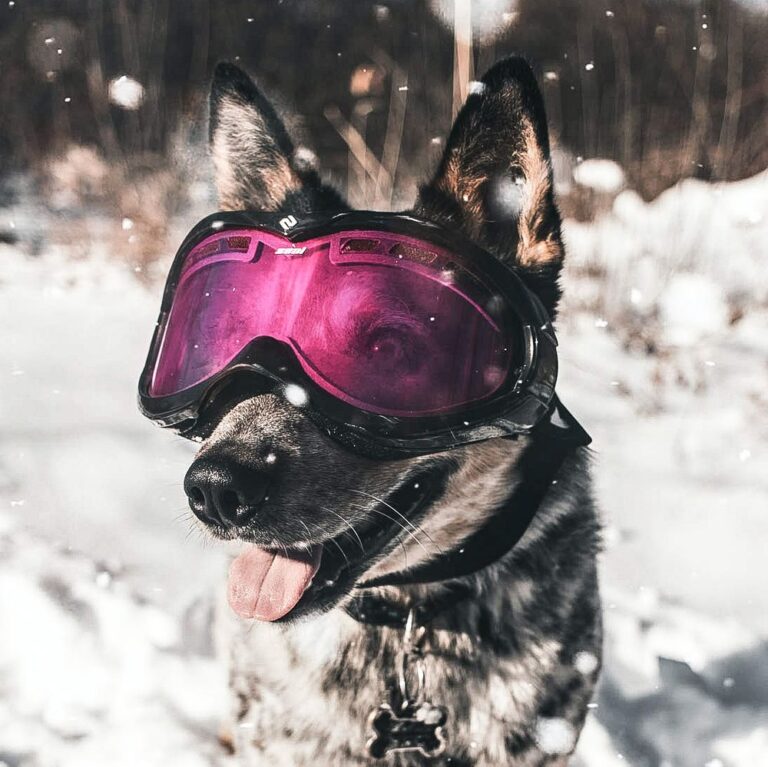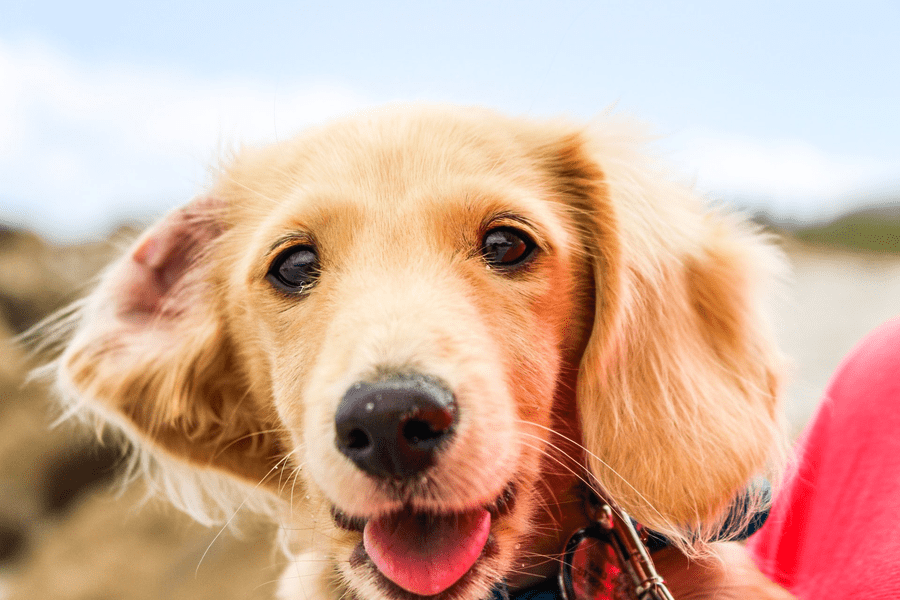.Tips To Keep Your Pets Safe This Winter.
In this article you will find helpful tips to keep your pets safe this winter. Enjoy!
As winter quickly approaches, and the temperature begins to drop we prepare by going out and buying ourselves new parkas, winter boots, and warm weather accessories.
We make sure that we have everything we need to stay warm and cozy while out and about in the freezing weather.
It is easy to forget while we get bundled up to go on our winter walks, that our pets also need the same kind of attention when going out in the cold.
We often think that our furry friends will be fine in the cold weather, after all they do have a built-in coat. In many cases, this is true; dogs are able to handle cold weather exceptionally well. However, not all dogs are adept at living in cold temperatures.
Many pets, particularly very young pups and senior dogs are susceptible to hypothermia and frostbite if not taken care of properly. Here are some tips and tricks to making sure your pets stay safe this winter.
How Cold Is Too Cold For Your Pet?
Generally speaking, temperatures hovering at 45F and above are safe for your pup to be out and about without any concern. Most dogs have enough self-insulation at these temperatures to remain comfortable without needing any further protection from the elements.
Once temperatures drop to 32F or below you may want to consider getting a sweater for your furry friend. While most dogs can go out for short periods of time in this chilly weather, if you are taking your pet for a walk you will want to layer them up. This is especially true for:
- Thin haired breeds like Greyhounds, Dachshunds, and Bulldogs.
- Senior dogs who may have weaker immune systems or arthritis. Adding a sweater will help protect their older joints from the chilly winter air as well as the moisture.
- Small dogs and puppies. These pups are unable to produce the same amount of body heat as a large breed and tend to feel the cold more quickly.
If you are on the hunt for a furry companion to keep you company on winter outings, you may consider opting for a Northern breed of dog. These dogs tend to have dense coats of fur that naturally insulate them from the cold.
They also have staunch, furry paws that allow them to navigate icy landscapes. Some breeds to consider would be; Akita, Alaskan Malamute, Bernese Mountain Dogs, and Saint Bernards.
At temperatures at or below 20F, you will want to keep an eye on all pets when letting them outside, even for short periods of time. Make sure to look for any signs of discomfort that your dog may be having due to the cold weather.
Some Signs That Your Pet May Be Too Cold Are;
- Shaking and/or shivering
- Whining and/or barking
- Lifting their paws off the ground
- General Changes in Behavior
- Reluctance to keep walking, or being outside
- Attempting to seek shelter
It is important to make sure you are on the lookout for signs that your pup may be uncomfortable. When playing outside be sure that you are taking breaks to warm up and get hydrated.
Tips to keep your pets safe this winter | Bundle Up
While being aware of what to look out for when out in the cold with your dog, winter can also be a lot of fun for our furry friends. Many dogs love to frolic in the snow, and it is important to our pet’s health to continue with routine walks, even when it does get chilly out.
One simple solution to making sure your pet stays safe and warm this winter is to bundle up. If you have a dog that does get cold easily, or you enjoy going on long walks with your furry companion, then buying them their own winter gear is a great idea.
According to Fortune Business Insights the global market for pet’s clothing in 2020 was worth approx $5 billion USD. Out of this exploding pet clothing trend coats and jackets made up 22.65% of the market.
Another item that is quickly gaining popularity for dogs is the use of goggles, or other eye protection. These offer great protection against harsh elements while also providing UV protection. The use of goggles can also prevent injury from blowing snow as well as ice.
With so many options out there today, it is easy to make sure that your pet is kept nice and toasty while out on their winter jaunt. Whether it be a sweater, a coat, or even booties your pup will be able to remain warm, and be stylish all at the same time.
Protect Those Paws From Snow And Ice
 Winter can be especially brutal on our pet’s paws. During these cold months our pets’ paws are being exposed not only to the freezing temperatures; they are also in contact with chemical agents. The worst of which is salt (used as a de-icer).
Winter can be especially brutal on our pet’s paws. During these cold months our pets’ paws are being exposed not only to the freezing temperatures; they are also in contact with chemical agents. The worst of which is salt (used as a de-icer).
Their pads are at risk for cracking, dryness, and frostbite. It is up to us as pet parents to be diligent when it comes to caring for our pups’ feet at this time of year.
Once winter turns its ugly head, you want to prep your dog’s paws for the season. A good first step is to trim your dog’s paws thoroughly. This will prevent any kind of ice build up once your pup hits the snow, and will also make after play cleanup easier.
Just like bundling your dog up in a sweater or jacket, you can also opt for a bootie. These will offer the most protection to your furry friends’ paws. Not only will they protect your dog’s paw pads from the cold, they also add a barrier. This means that there will be no direct contact with potentially harmful chemicals. It also means less cleanup when you get home from your walks.
Tips To Keep Your Pets Safe This Winter | Bootie
If your dog does not like wearing a bootie, you can opt for a store bought paw balm, which acts as a barrier between the paw pads and the elements. A balm is easily removed with warm water at the end of a walk and can be reapplied to prevent dryness and cracking throughout the season. Balms can be found at most pet stores, but if you are unable to find one you can also opt for using Vaseline as a safe alternative.
You are also going to want to follow up after a walk by thoroughly cleaning your pup’s paws. As soon as you get home from your jaunt in the snow it is important to inspect your pets paws.
Be on the lookout for ice buildup and stones, or pebbles. Gently remove any debris that is found between the paw pads and wipe away dampness with a clean towel.
If there are larger snowballs present, take a warm, damp cloth and slowly melt away the snow that has built up on your pets paws. Be gentle, and continue to massage your pet’s paws until the buildup is removed. You can help prevent snow from building up on your dog’s paws by regularly trimming the hair in between their paw pads.
Once you have cleaned off your dog’s paws, do a quick assessment to make sure there are no cuts or scrapes anywhere. You can also look for any cracking or dry spots that they may have. Follow up with an antibacterial ointment, or some more paw balm if needed.
Tips to keep your pets safe this winter | Shelter and Diet
For the most part a dog’s diet will not change with the seasons. If you keep your pet indoors, then continue to feed them as you normally would. You will only have to keep a close eye on hydration, especially after being exposed to the cold for any length of time.
If you do have an outdoor pet however, you will want to make some changes to their diet. It is important during the winter that your pet is eating a diet that is higher in calories if they are living out of doors.
As a pet parent you want to make sure that your pet is given the best winter shelter possible. Any shelter that you provide should be big enough that your pet can move around comfortably, but also small enough that it retains heat.
Any outdoor shelter should be slightly raised off of the ground so that snow, and rain do not blow inside. A wet pet is not a happy pet. It should also have flooring that is easy to clean when needed. Cedar chips are a great option, as well as blankets, towels, and even a dog bed.
Tips to keep your pets safe this winter | Cats
Cats are naturally heat seekers. You may notice that if there is a spot of sun somewhere, your cat is going to find it, and soak up those rays. For a cat that is primarily indoors, a temperature of 45F is going to be a good cut off point for allowing outdoor time. This also applies to kittens, and elderly cats who are affected more by cold temperatures.
If you do have an outdoor cat, you are going to want to set up a shelter that is cat appropriate. Similar to a dog’s shelter it should be raised off the ground, and be an appropriate size, but in addition it is a good idea to add in some type of heating source. This could include microwaveable heating pads, or an oil powered radiator.
Be sure to check under your car hood, as well as underneath before starting it up in the morning. Cats are attracted to heat and will often hide in and under cars for the warmth emitted.
You also want to be careful when using antifreeze. It is appealing to cats, but also incredibly toxic to them. Antifreeze poisoning is a common cause of death in outdoor cats, and often goes undetected.
Winter is a magical time of the year. Hopefully you will be able to bundle up along with your four-legged friend and make the most of it this year.









